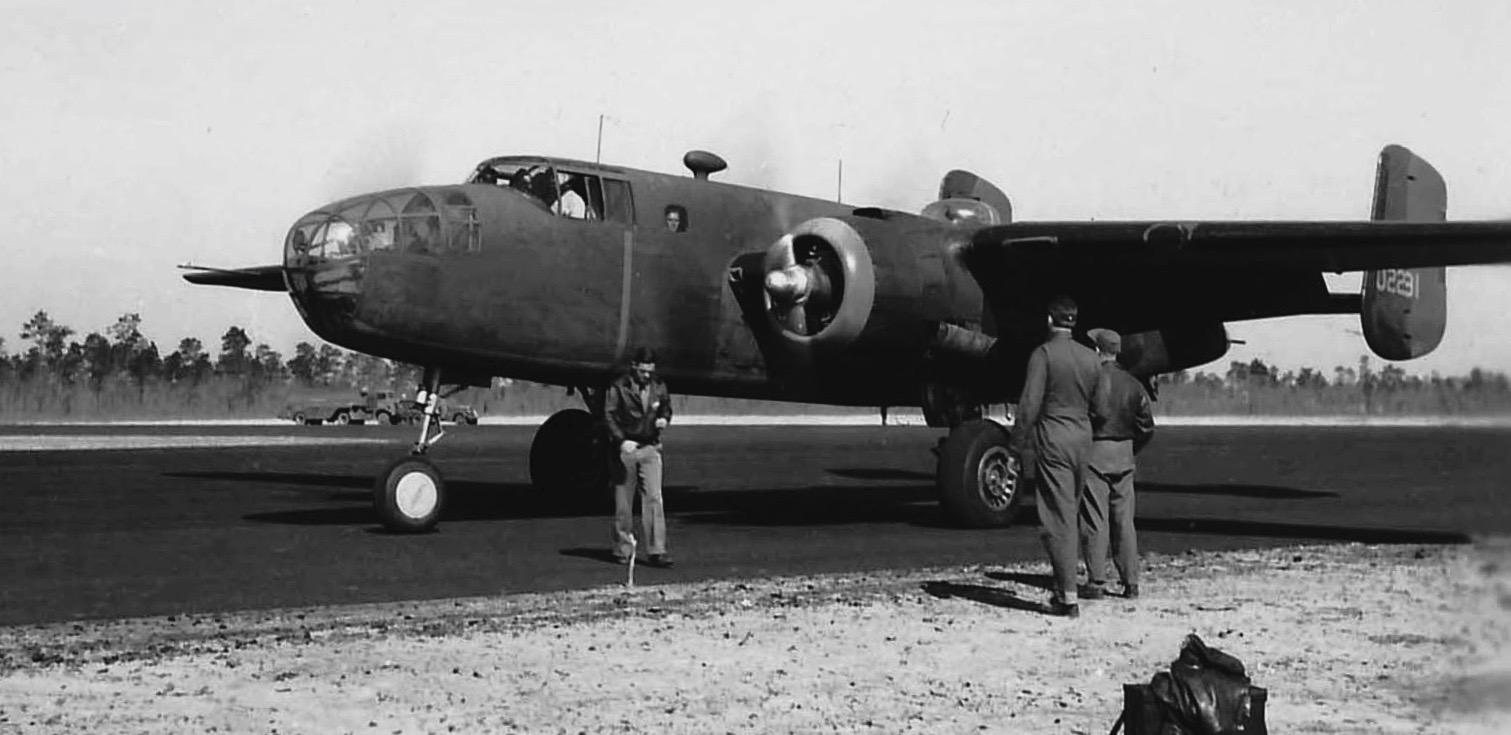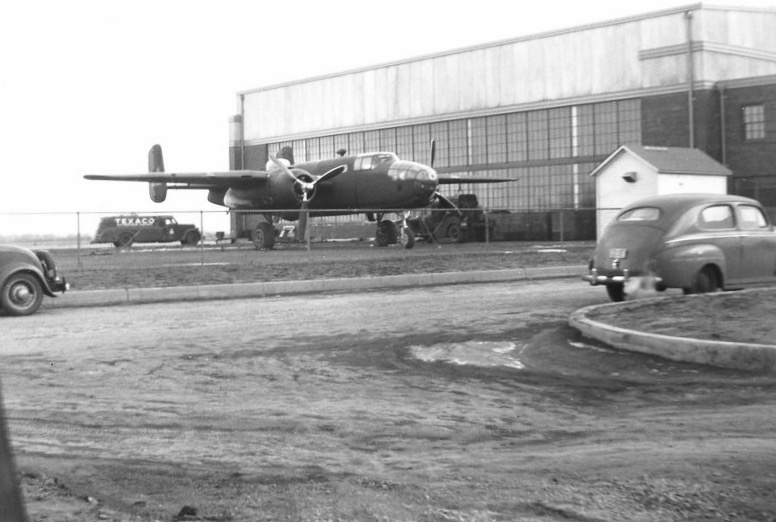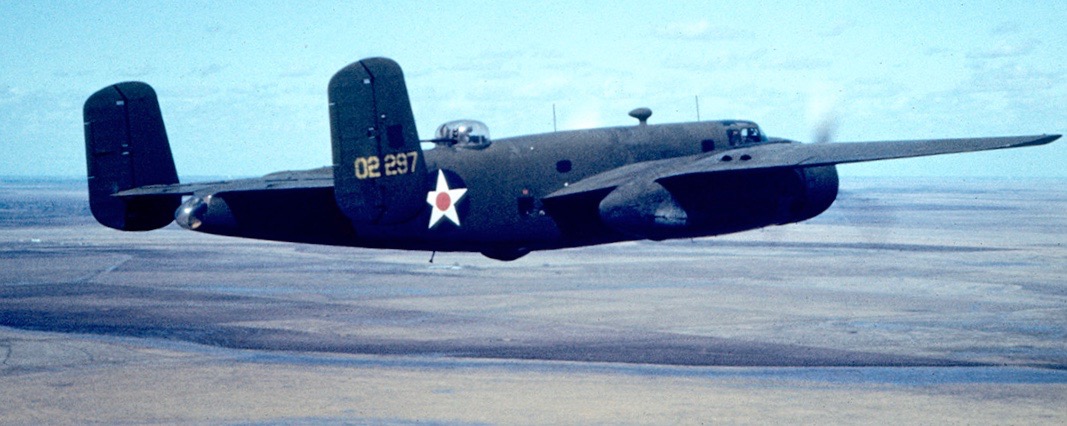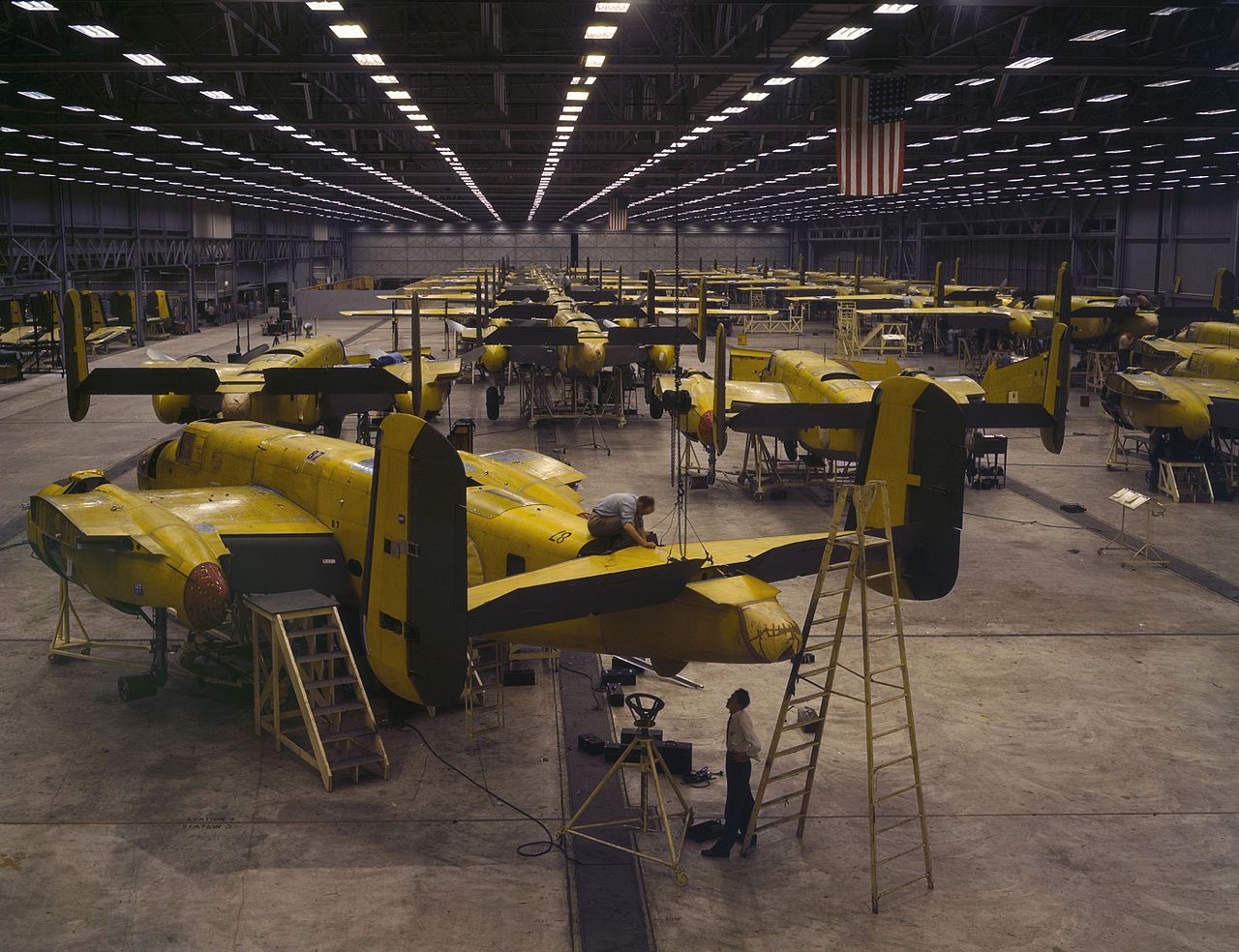
27 March 1942: After three weeks of intensive training at Eglin Field, Florida, twenty-two North American Aviation B-25B Mitchell twin-engine medium bombers of the 34th Bombardment Squadron (Medium), 17th Bombardment Group (Medium), U.S. Army Air Force, under the command of Lieutenant Colonel James Harold Doolittle, completed a two-day, low-level, transcontinental flight, and arrived at the Sacramento Air Depot, McClellan Field, California, for final modifications, repairs and maintenance before an upcoming secret mission: The Halsey-Doolittle Raid.
The B-25 had made its first flight 19 October 1940 with test pilot Vance Breese and engineer Roy Ferren in the cockpit. It was a mid-wing airplane with twin vertical tails and retractable tricycle landing gear. The first 8–10 production airplanes were built with a constant dihedral wing. Testing at Wright Field showed that the airplane had a slight tendency to “Dutch roll” so all B-25s after those were built with a “cranked” wing, using dihedral for the inner wing and anhedral in the wing outboard of the engines. This gave it the bomber’s characteristic “gull wing” appearance. The two vertical stabilizers were also increased in size.

The B-25B Mitchell was operated by a crew of five: two pilots, a navigator, bombardier and radio operator/gunner. It was 53 feet, 0 inch (16.154 meters) long with a wingspan of 67 feet, 7.7 inches (20.617 meters) and overall height of 15 feet, 9 inches (4.801 meters). The The B-25B had an empty weight of 20,000 pounds (9,072 kilograms) and the maximum gross weight was 28,460 pounds (12,909 kilograms).
The B-25B was powered by two air-cooled, supercharged, 2,603.737-cubic-inch-displacement (42.668 liter) Wright Aeronautical Division Cyclone 14 GR2600B665 (R-2600-9) two-row 14-cylinder radial engines with a compression ratio of 6.9:1. The engines had a Normal Power rating of 1,500 horsepower at 2,400 r.p.m., and 1,700 horsepower at 2,600 r.p.m. for takeoff, burning 100-octane gasoline. These engines (also commonly called “Twin Cyclone”) drove three-bladed Hamilton Standard Hydromatic variable-pitch propellers through 16:9 gear reduction. The R-2600-9 was 5 feet, 3.1 inches (1.603 meters) long and 4 feet, 6.26 inches (1.378 meters) in diameter. It weighed 1,980 pounds (898 kilograms).

The medium bomber had a maximum speed of 322 miles per hour (518 kilometers per hour) at 15,000 feet (4,572 meters) and a service ceiling of 30,000 feet (9,144 meters).
It could carry a 3,000 pound (1,361 kilograms) bomb load 2,000 miles (3,219 kilometers). Defensive armament consisted of a single Browning M2 .30-caliber machine gun mounted in the nose, two Browning M2 .50-caliber machine guns in a power dorsal turret, and two more .50s in a retractable ventral turret. (The lower turrets were removed from all of the Doolittle B-25s.)
North American Aviation, Inc., built 9,816 B-25s at Inglewood, California, and Kansas City, Kansas. 120 of these were B-25Bs.

© 2017, Bryan R. Swopes
Here’s a very nice, supplemental 9-minute video to accompany today’s story about the Mitchell B-25.
https://www.youtube.com/watch?v=FmFQ-T7KFNs
Thanks. I’ll take a look when I get a chance.
Thanks Bryan for posting. I test missiles for the Army and drive by this site twice a year on Elgin where Doolittle and his Raiders practiced for their mission. To say that the site is off the beatin path would be an understatement. It is way out in the boondocks and if it wasn’t for the plaque/historical marker that is erected to describe the significance of the location you would drive right by it. I’ve always been tempted to stop and read these plaques/historical markers. When I read this one I was so glad that I did. What a realization it was for me to know where I was and what took place there in March 1942.
Thanks, Kirk. Never drive by a historical marker. 🙂
Extremely interesting post. I was born in April 1941, graduated from Grant High in 1960, retired from the Air Force in 1991, worked at McClellan AFB, and helped erect the Air Force Museum displays at McCLELLAN, BUT NEVER READ OR HEaRD OF THIS Information About the B-25. Also, was a founding member of the USS Hornet Foundation on which there was no such info at the time. Great post! Sgt Brill, USAF (Ret), Thailand
Bryan,
As a huge admirer of the Doolittle Raiders I loved this post. Actually had the honor of meeting one the Raiders, Edward Saylor… what a story 💪🇺🇸
But I also enjoyed your shared photo of the historical marker obviously about your great great great grandfather. This is very cool! I know your proud as you should be 👍
Patriots all over appreciate what the Doolittle Raiders did and what our forefathers did in the American Revolution.
Can’t thank you enough for this superb TDiA website.
Thank you very much, Chris. I really appreciate that.